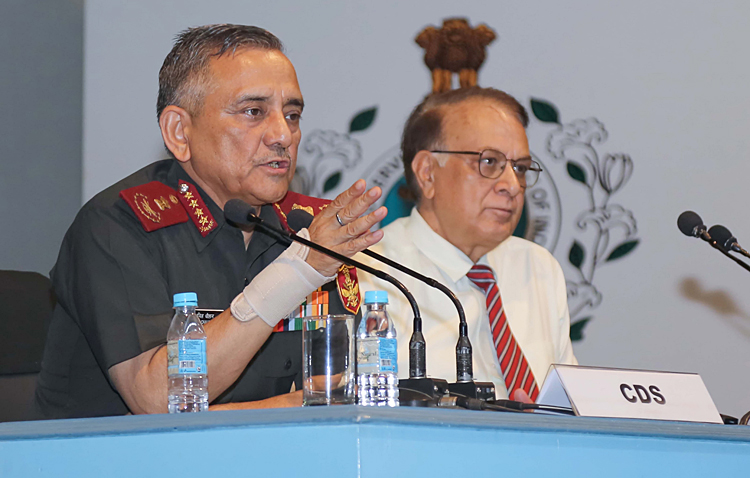INDIAN ARMED FORCES CHIEFS ON OUR RELENTLESS AND FOCUSED PUBLISHING EFFORTS

The insightful articles, inspiring narrations and analytical perspectives presented by the Editorial Team, establish an alluring connect with the reader. My compliments and best wishes to SP Guide Publications.

"Over the past 60 years, the growth of SP Guide Publications has mirrored the rising stature of Indian Navy. Its well-researched and informative magazines on Defence and Aerospace sector have served to shape an educated opinion of our military personnel, policy makers and the public alike. I wish SP's Publication team continued success, fair winds and following seas in all future endeavour!"

Since, its inception in 1964, SP Guide Publications has consistently demonstrated commitment to high-quality journalism in the aerospace and defence sectors, earning a well-deserved reputation as Asia's largest media house in this domain. I wish SP Guide Publications continued success in its pursuit of excellence.
- Prime Minister Modi Visits Punjab’s Adampur Air Base, Interacts with Airmen after Successful ‘Operation Sindoor’; Stern Message to Pakistan
- The layered Air Defence systems that worked superbly, the key element of Operation Sindoor
- Operation Sindoor | Day 2 DGMOs Briefing
- Operation Sindoor: India strikes back with Precision and Purpose
- Operation Sindoor: Resolute yet Restrained
- India’s Operation Sindoor Sends a Clear Message to Terror and the World – ‘ZERO TOLERANCE’
- Japan and India set forth a defence cooperation consultancy framework, talks on tank and jet engines
- Terrorist Attack in Pahalgam in Kashmir: Unfolding a long surgical war against PAK
- Lt General Pratik Sharma takes over Command of Indian Army's Northern Command
Jointness 2.0, that is developing Joint Culture in Armed Forces, is the way forward, says CDS General Anil Chauhan
“Theatre Commands to lay the foundation for catapulting the Armed Forces into the next orbit of Military Preparedness and War Fighting”

Chief of Defence Staff (CDS) General Anil Chauhan has called upon the three services to create a Joint Culture as they move towards forming Joint Operational Structures. Speaking on ‘Jointmanship : The Way Ahead’ as part of 22nd Major General Samir Sinha Memorial Lecture organised at USI of India in New Delhi, the CDS termed developing Joint Culture in Armed Forces as Jointness 2.0, which is the way forward.
The Chief of Defence Staff said, Jointness 1.0 was about better bonhomie and consensus among the services, and as there were no major differences, there is an impetus to move towards the next level of Jointness which is Jointness 2.0.
Acknowledging the distinct culture of all the three Services, the CDS underscored that there was a need to create a fourth culture in the services. “Joint Culture though different from Service specific Culture, needs to respect the uniqueness of each service. We must be able to distill the best of each service, and incorporate the Highest Common Factor, rather than settle for the Least Common Denominator,” said the Chief of Defence Staff. He mentioned various initiatives of symbology that were being processed towards fostering the Joint Culture, including Tri-Services participation in national events.

The CDS termed Jointness & Integration as pre-requisites to the creation of functional Integrated Theatre Commands, and explained the significance of such Commands. “The creation of such commands will separate the ‘operational’ functions from the Raise-Train-Sustain (RTS) and other administrative functions, and will allow greater focus of the operational commander to matters of security,” he said.
The CDS said the Theatre Commands will not be an end state but the beginning of the next set of reforms. He said, Integrated Theatre Commands will lead to many reforms like Single to Multi Domain operations, fusing space and cyber space into traditional domains, digitisation of battlefield information and visualisation, net centric to data centric among others.
Stressing that the reforms in Indian Defence eco-system are necessity, the CDS said, nation states across the globe are facing a new set of challenges, and current flux in world order is forcing nations to review their security strategies. The rapid and unbridled march of technology is transforming the way future wars will be fought, he added.





